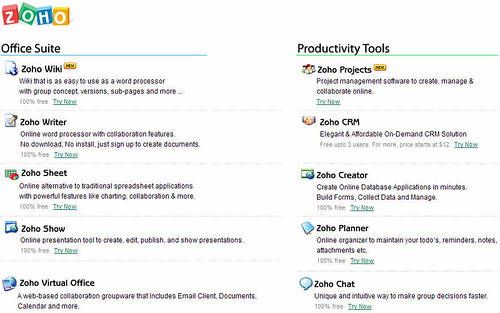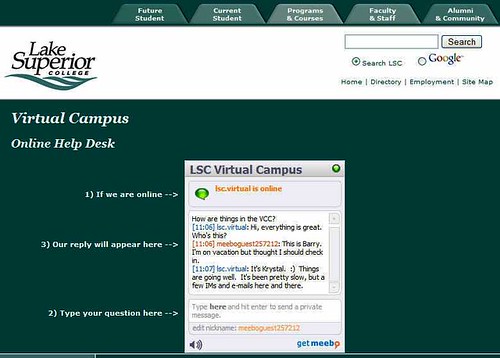 My favorite web tool for 2006 is actually a suite of tools. I am a big fan of Zoho, the group of developers in India who are working hard to develop web-based office applications along with a whole flotilla of other tools. Here is a brief interview with company CEO Vembu about the company and their plans. Extreme Tech also gives an overview of Zoho. Gizbuzz posted a podcast interview with the Chief Architect of Zoho, Raju Vegesna.
My favorite web tool for 2006 is actually a suite of tools. I am a big fan of Zoho, the group of developers in India who are working hard to develop web-based office applications along with a whole flotilla of other tools. Here is a brief interview with company CEO Vembu about the company and their plans. Extreme Tech also gives an overview of Zoho. Gizbuzz posted a podcast interview with the Chief Architect of Zoho, Raju Vegesna.
Here is a screenshot showing most of the tools they offer. I haven't used all of these yet, but I have used many of them and the amount of progress being made on the development of these tools is amazing.

They have released several new things at the end of 2006, some of which I haven't even had the time to play with yet. Read their announcement about the Office plug-in, the Zoho API, and the Zoho Desktopize widget. TechCruch also reviewed this.

I use Zoho Writer quite often. PC World Magazine ranked it number one of the online word processing tools. It is great for collaboration with others without passing around Word documents ad nauseum, and it renders very well as a webpage, which is not something that anyone can honestly say about MS Word. I especially like using Writer for presentation materials for workshops and seminars. Not only can anyone access your materials after the workshop, but you can make heavy use of links to other sources and it is very easy to increase font size on the presentation screen by toggling the +/- keys. The Zoho Writer Blog has lots of good info.
Here are three of the presentations that I've made using Zoho Writer during the past few months:
- Web 2.0 Whirlwind at League CIT in Charlotte
- Web 2.0 for Administrators at MnSCU Deans/CAO meetings
- Faculty Peer Review of Course Design at WCET in Portland

Zoho Wiki is brand new just being released on December 20, 2006. I use wikis quite a bit but have never settled on a preferred one, using pbwiki, Jot, WikiSpaces, and others. I'm guessing that I will start using the Zoho Wiki more extensively since it:
- uses the WYSIWYG editor from Zoho Writer that includes spell check
- it uses the Zoho Single Sign-on, so you can use your existing Zoho ID
- you can embed many different kinds of objects into your Wiki pages like a Zoho Sheet, a Zoho Show, a Zoho Creator application/form or a YouTube video.
BTW, their number one ranking in my list has nothing to do with being picked as the first Zoho Featured User back in September. Pure coincidence I tell ya, pure coincidence.



















































